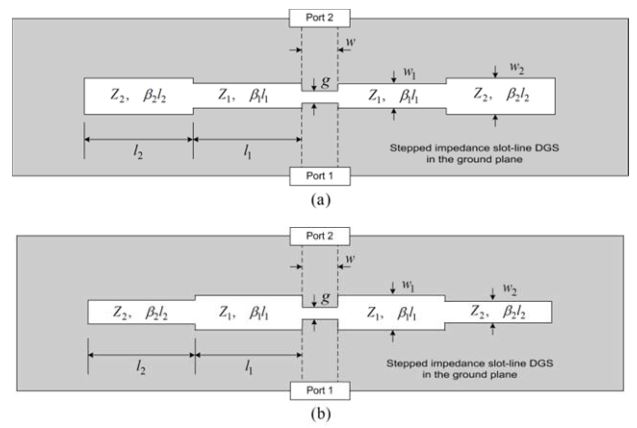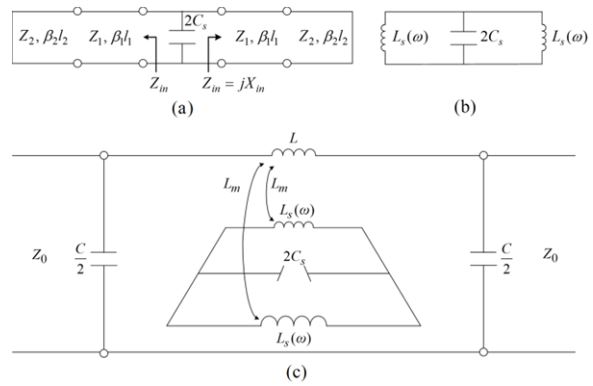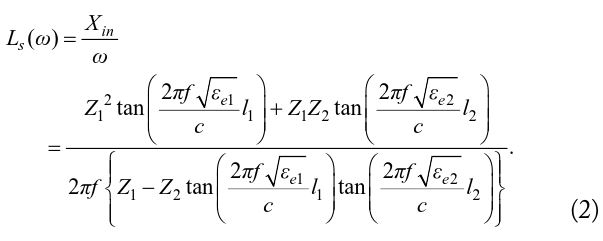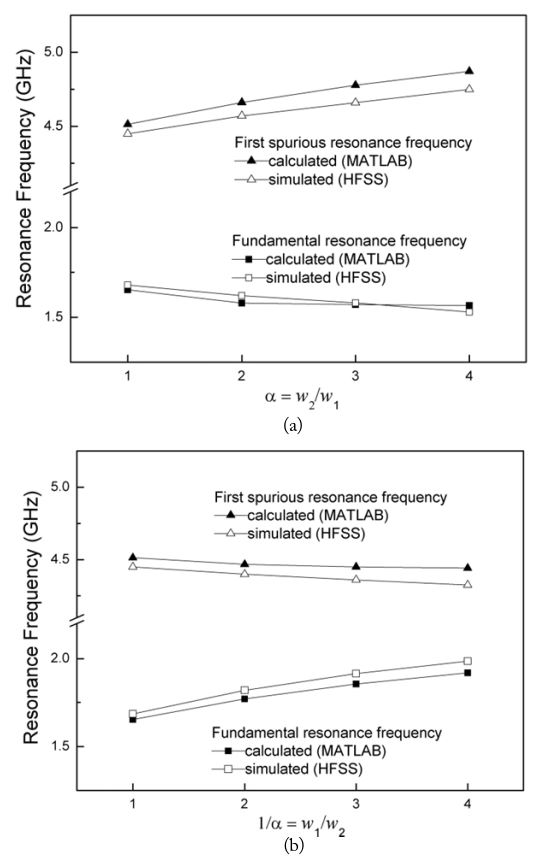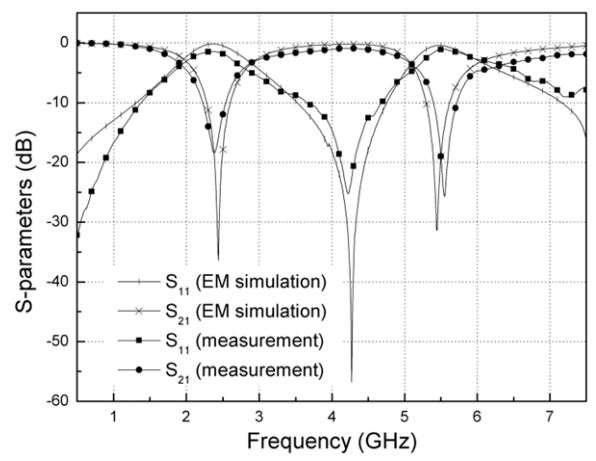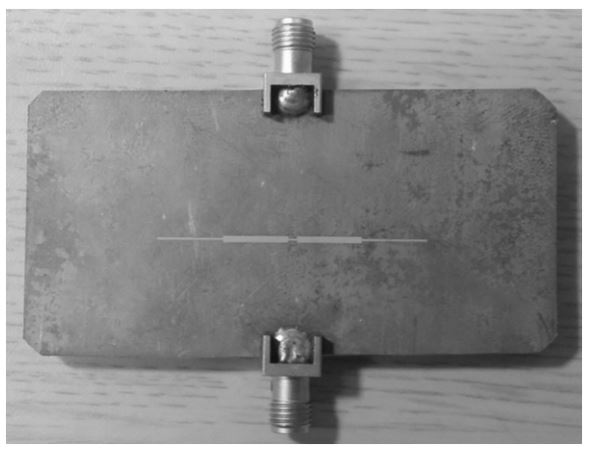



The planar transmission line with a spiral-shaped defect in the ground plane is one of the most popular slot-shaped defected ground structures (DGSs) [1]. Based on this structure, several modified slot-shaped DGSs have been proposed to comply with required performances [2-8]. In terms of circuit modeling, many other researchers have presented equivalent circuits for various slot-shaped DGSs. Simple lumped elements circuit models [8,9] and geometric models based on transmission lines were proposed in [10-13]. These efforts have provided improved physical insight into the operation principle of the DGS.
The stepped impedance resonator (SIR) is used in the filter design in order to push the spurious pass-band to a higher frequency range [14,15] and to reduce the circuit size [16]. In addition, this resonator has become very popular in the design of dual-band filters since the dual pass-band behavior can easily control the second pass-band [17].
In this paper, we describe the dual-band property of the microstrip line with a stepped impedance slot-line DGS in the ground plane. This paper also proposes an equivalent circuit model that provides insight into the coupling mechanism between the microstrip line and the stepped impedance slot-line, as well as a technique for obtaining analytic expression of the resonance frequencies.
II. CIRCUIT MODEL AND RESONANCE PROPERTIES
The configurations of the proposed stepped impedance slotline DGS on the ground plane of the microstrip line are shown in Fig. 1, where two short-circuited stepped impedance slotlines with different characteristic impedances Z1 and Z2 and electrical lengths
The transmission line model of the stepped impedance slot-lines is replaced by an equivalent circuit as depicted Fig. 2(b), where the equivalent inductance is
Here,
Based on the equivalent resonance model of the etched pattern on the ground plane, the equivalent circuit model of the microstrip line with stepped impedance slot-line DGS is shown in Fig. 2(c) [13]. The
In the design of a DGS, it is important to find an analytic expression for the resonance frequency, which can be directly derived from the dimensions of the etched pattern. From Fig. 2(c), the resonance angular frequency is
By substituting Eq. (2) for
The closed-form expression for the effective permittivity and the characteristic impedance of the slot-line were reported in [19]. The narrow etched gap on the ground plane can be modeled as a microstrip gap [18], and a closed-form expression for microstrip gap capacitance 2
For the proposed structure, it would be of interest to see how the fundamental resonance frequency (
For the dimensions
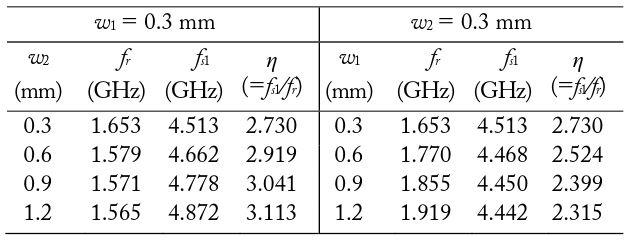
Calculated fundamental resonance frequencies, first spurious resonance frequencies, and normalized first spurious resonance frequencies for various slot widths (l1 = l2 = 12 mm)
We compared the predicted results of the proposed model with the EM simulated results. The simulation was performed using EM software HFSS version 11 (ANSYS Inc., Canonsburg, PA, USA). The resonance frequencies and the first spurious resonance frequencies from the proposed model and those from EM simulation are plotted in Fig. 3 as the slot width ratio changes. In the proposed circuit model, we ignored the influence of the step and short discontinuities in the slot-line, since no analytical results are available for various slot-line discontinuities. The discrepancies may be attributed to these factors. However, the predicted results of the proposed model agree with the EM simulated results.
Fig. 4 illustrates the comparative
This paper has presented an analytical expression for the resonance frequencies and the equivalent circuit model of a DGS with stepped impedance slot-lines in the ground plane of the microstrip line. The theoretical prediction was in reasonable quantitative agreement with the EM simulated resonance property.
